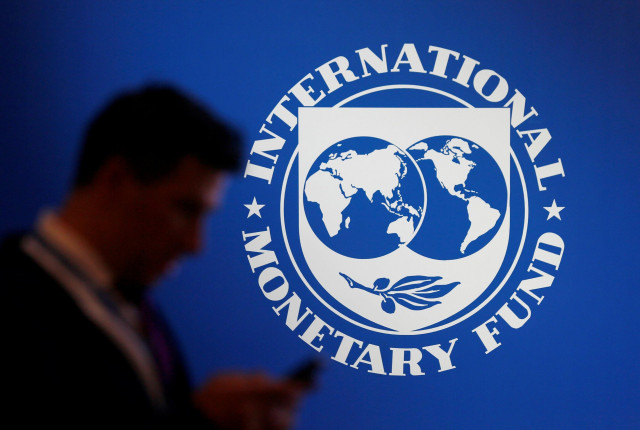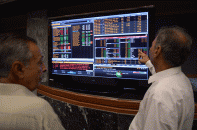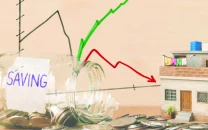‘Longer IMF programme could lead to debt trap’
Dr Ashfaque Hasan Khan warns against IMF dependency, calls for domestic reforms

NUST Institute of Policy Studies (NIPS), Director General, Dr Ashfaque Hasan Khan, has stated that Pakistan should seek the new International Monetary Fund (IMF) loan package of $3-4 billion for a maximum period of three years, as a longer and larger programme would be an economic disaster, potentially making Pakistan another Argentina, which is stuck in a debt trap.
In a set of recommendations on the subject ‘Pakistan’s Economic Crisis: Challenges and The Way Forward’, Khan noted that the development suggests Pakistan is preparing to seek an $8 billion loan for a five-year programme. “This will be a disaster for Pakistan,” he said.
The government of Prime Minister Shehbaz Sharif, Finance Minister Muhammad Aurangzeb, and the economic team should focus on attracting foreign investment from the Special Investment Facilitation Council (SIFC) platform and implementing reforms to strengthen the domestic economy instead of continually acquiring new debt to repay maturing debt, he urged.
If the nation continues to increase the size of the programme, he warned that Pakistan will be no different from Argentina, which has remained under an IMF programme for almost half a century now. Argentina has continually increased the size of the programme, now close to $43 billion, and has emerged as the largest customer of the IMF. “Hence, Argentina will never break free from the IMF’s clutches.”
The larger the amount a nation borrows from the IMF, the larger the repayment will be. “Our foreign exchange earnings will not be enough to repay the larger amount. Hence, we will further increase the size of the IMF loan, ultimately becoming like Argentina,” he cautioned.
Khan, who is a former economic advisor to the Ministry of Finance, stressed that the SIFC is a great initiative for Pakistan. “We are making efforts to attract more and more investment to the country. By doing so, we aim to bring more dollars into the country. Seeking a larger size of the IMF programme implies demeaning the work of the SIFC,” he said.
Securing a larger programme rather than seeking foreign investment is like “admitting defeat ourselves. In my view, with SIFC in operation, we don’t need a larger amount from the IMF.”
“Our negotiating team must concentrate on reforms rather than on policies,” he maintained.
He urged the authorities concerned to declare that this will be the last IMF programme. The authorities must set up a high-level committee to prepare an alternative plan that will be implemented after the expiry of the new programme in 2027.
Read The growing circular debt burden
A NIPS report, containing papers presented in the seminar, edited and reviewed by Khan, further stated that the root cause of the persistence of the large fiscal deficit during the last five to six years has been the ballooning expenditure – driven by exorbitant interest payments against total national debt. Why has the expenditure surged during the last five to six years? “The main reason is the persistence of keeping the SBP’s (State Bank of Pakistan) policy rate at an extraordinarily high level (22%) for a long period of time.”
Empirical evidence suggests that a 1% reduction in the policy rate will reduce interest payments (the single largest budgetary expenditure) by over Rs350 billion in one year. It has been empirically shown that this will also contribute to reducing inflation. It is proposed that SBP must gradually cut the policy rate to single digits (7-8%) by June 2027.
Imagine that if SBP reduces the interest rate from 22% to 16% by June 2025, it will reduce budgetary expenditure by at least Rs2,100 billion in just one and a half years. This will help reduce the budget deficit, resulting in less borrowing and less accumulation of public debt, it said.
The report further recommended reducing the cost of imported inputs. “Bring the exchange rate gradually to Rs240-250 per dollar. Ensure a two-way movement of the exchange rate. This will bring the rupee-dollar parity to Rs240-250 per dollar.”
Workers’ remittances have the potential to increase to over $40-45 billion a year if the hundi and hawala systems can be curbed.
SBP, in consultation with major foreign exchange companies, can streamline the flow of remittances. The Foreign Exchange Association can be used to bring more dollars through official channels, it said.
Reduce the prices of utilities (electricity and gas). Energy sector issues are largely governance issues. “Raising energy prices alone cannot resolve energy issues,” it said.
Large infrastructure projects must be shifted to public–private partnership mode to reduce the burden on the budget.
Published in The Express Tribune, March 24th, 2024.
Like Business on Facebook, follow @TribuneBiz on Twitter to stay informed and join in the conversation.



















COMMENTS
Comments are moderated and generally will be posted if they are on-topic and not abusive.
For more information, please see our Comments FAQ